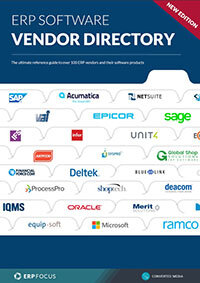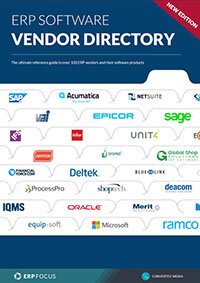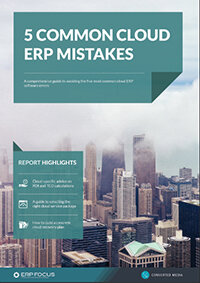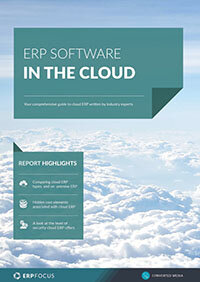What to look for in an ERP for multi-facility companies
Regardless of a particular market sector, if you operate more than one facility, management stakes go up considerably if you intend to utilize an ERP platform in association with more than just a single office/plant facility. Part of the overall challenge exists due multi-nodal coordination, and definitions relating to data volume, but there are other daily sensitivities to contend with as well.
Consequently, we thought we’d take a tour of what a multi-facility ERP platform might require, and afterwards, you can feel either satisfied with your current list of system features, or instead revise your thinking accordingly. However, ERP platforms should first and foremost be easily compliant with the overall culture of a business, along with abilities to readily consume internal work patterns and policy rules.
While these central requirements are largely straightforward, other challenges are arcane, including:
Multi-facility scalability
You would think that scalability would be intrinsic to multi-facility ERP platforms, but this assertion isn’t necessarily true. While legacy systems at the on-premise level tend to ‘measure’ scalability based on the ready availability of physical nodes or storage component you can easily see and count; the cloud does everything ‘up there’. Consequently, you won’t necessarily know exactly how many demand-based ports can be integrated, how much universal bandwidth will be required, or how much storage each facility node will demand and consume, unless you have a serious discussion with cloud provider first.
Use our free online comparison tool to find multi-facility ERP that works for you
From a strategic perspective, the cloud itself implies unlimited scalability in terms of multi-facility operations, but as one might expect the potential of this kind of expansion always comes at a price. At an elemental level cost management concerns include the desired number of active nodes, times the number of workstations, variously defined volumes of data being passed to/from each facility node, and whether the enterprise’s overall infrastructure will operate as a complex of parallel remote, or a centralized datastore.
There are other issues as well, such as discrete and universal security concerns, local and extended performance and monitoring issues, and how each multi-nodal complex will work in concert with all other nodes, but the point is that you can’t just buy and integrate additional facility-nodes without seriously thinking about it.
Synchronization of process management
This is an apparently obvious feature when it comes to multi-facility ERP operations, but many times end up creating more problems than it resolves. This particularly vexing issue usually occurs when intercontinental processes are involved.
Extended supply-chains tend to grow spontaneously driven by workforce availability, and particularly in recent decades, where off-shore production has tended to be seen as a lowest bidder advantage. US tech sectors including the production support for computing, general digital devices, and digitally-equipped durable goods associated with the IoT, have taken advantage of ERP managed plant operations in the Asia Pacific, East Asia, and various EU member countries.
Even when applying today’s cloud ERP capabilities, the global synchronization of production elements, including WIP or finished goods scheduling elements always pose business challenges. Consequently, multi-facility ERP platforms must be particularly effective at the production, inventory, and distribution levels; otherwise finished goods deliveries to the point of sale can experience significant downside impacts.
In the end of the day, the phrase multi-facility means more of the same times 10; so be particularly detailed when you’re working to validate or develop requirements for the use of any extended ERP platform.
Free white paper

ERP Software Vendor Directory
Put the most comprehensive ERP vendor directory on your desk today

Featured white papers
-

Five common cloud ERP mistakes
Get your comprehensive guide to avoiding the five most common cloud ERP errors
Download -

Related articles
-

Why you shouldn't underestimate cloud ERP consultant costs
Make sure to take the cost of a consultant into account when planning your cloud ERP budget
-

CMMC Compliance: What Aerospace and Defense Manufacturers Need to Know
Key insights on CMMC compliance, deadlines, and securing DoD contracts with CMMC 2.0 certificatio...
-

Cloud ERP vs on-premise ERP: an objective comparison
Are you choosing between cloud ERP and on-premise ERP? This balanced guide will help

